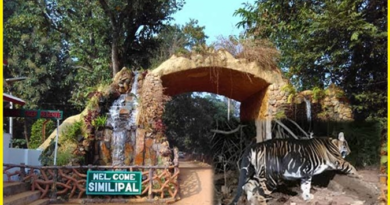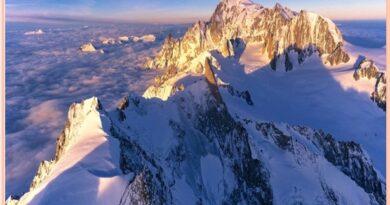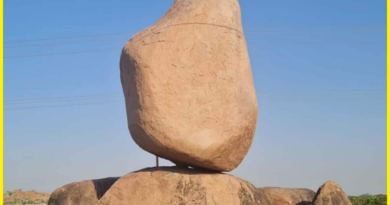Beyond Earth-Unveiling the Mysteries of Lamayuru’s Moonland
Moonland of Lamayuru Ladakh
The Moonland Lamayuru, located in the Ladakh region of India, is a unique geological formation renowned for its lunar-like landscape. Moonlike topography developed in lacustrine sediments of about 40,000-year-old lakes after its disappearance around 1000 years ago. Lamayuru is on the Leh-Srinagar Highway and can be visited from Leh or on your way from Srinagar if you drive to Leh.
Lamayuru is known for its monastery, and its “lunar” landscape is quaintly promoted as a “Moonscape” for tourists. The landscape is certainly incredible with its spectacularly odd geological formations, though this is not unique to Moonland Lamayuru. Lamayuru monastery is ancient, built into the ‘moonscape’. It has some beautiful frescoes and frightening masks. Visitors can also see the glassed-in meditation cave of the Lama Naropa. Moonland Lamayuru is a part of the Dri-Gungpa sector in western Ladakh.
Rugged Terrain-The Moonland Lamayuru is characterized by deep gorges, ravines, and undulating hills, with sharp ridges and spires carved out of the soft sedimentary rock.
Erosion Patterns- The erosional patterns in the Moonland exhibit intricate designs and textures, with layers of sedimentary rock exposed in various formations.
Barren Landscape- Vegetation is sparse in the Moonland due to the harsh climatic conditions and the nature of the rocky terrain, contributing to its barren and desolate appearance.
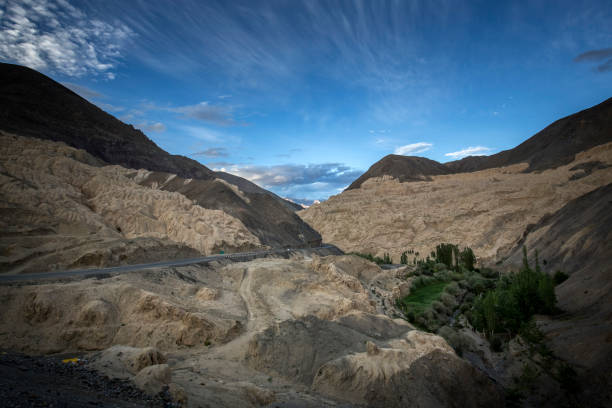
Geological Features
The Moonland Lamayuru in Ladakh, India, is renowned for its unique geological formations, resembling the rugged and barren surface of the moon. Geologically, the Lamayuru Formation includes the Lamayuru and Namikala flysch deposits of the Triassic-Jurassic age. This Formation is composed of shales, schist, and phyllites. This Lamayuru Formation forms the base and source of palaeolake deposits. In the Late Pleistocene (40000 years). The terrain is marked by deep gorges, rugged cliffs, and barren hills that have been sculpted by wind and water erosion over centuries.
the Lamayuru River was dammed due to a tectonically triggered landslide and the Lamayuru palaeolake came into existence. The sedimentation in the Palaeolake basin commenced at 40000 years and culminated at 1000 The deposits of Palaeolake consist of carbonaceous mud, sand, silty clay, and matrix-supported breccia. The palaeolake deposits are a product of complex interplay of lacustrine, fluvio-deltaic to colluvial processes.
Also read- Heavenly Heights-Keylong’s Himalayan Wonderland
The Lamayuru site extends along a small easterly flowing tributary of the Yapola River. The Yapola River carries glacial meltwater and drains from the Spongtang range toward the Indus River, a few kilometers downstream of Khalsi. Covering approximately 75 sq. km area, the Lamayuru watershed extends over a steep alpine terrain, from 3200 m near the Yapola River confluence with the Lamayuru River to more than 5500 m along the Nindam ridge and the Prinkiti ridge. The Lamayuru River flows from Nindam Ridge and meets the Chankhar Stream coming from Prinkiti Ridge at Lamayuru basin.
The sediments of Lamayuru palaeolake are more than 100 m thick. The sharp contact between Lamayuru flysch consisting breccia dominated limestone and overlying lacustrine silts indicates that the lake was massive and resistant enough to cause an immediate flooding of the valley and to initiate lacustrine sedimentation.
The present discharge of northeast northeast-flowing Lamayuru River is very low. During the Lamayuru palaeolake event, the discharge might have been higher with more humid periglacial conditions. The basal lacustrine deposits are represented by white chalky beds that crop out strikingly along the valley walls. These beds are composed of mud, silt, and fine sand are horizontally stratified, and are rich in organic debris. The occurrence of gastropods and ostracods in the center of the valley suggests the shallower depth of the lake.
Cultural Significance-
Spiritual Connection- Lamayuru is also home to one of the oldest and largest monasteries in Ladakh, Lamayuru Monastery, which adds to the area’s spiritual and cultural significance.
Pilgrimage Site- The monastery attracts pilgrims and tourists alike, especially during the annual Masked Dance Festival, where monks perform traditional Cham dances.
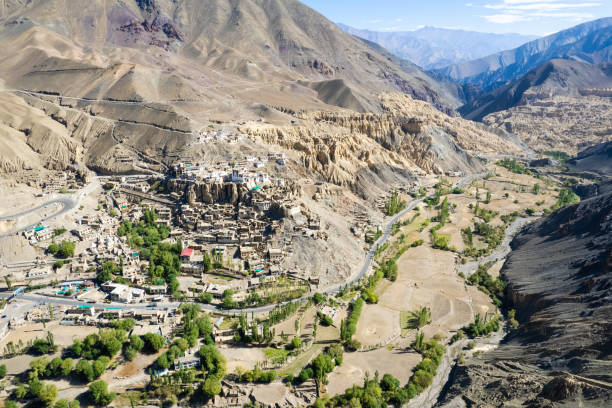
Tourism
Moonland Lamayuru was founded in the 11th century by Mahasiddacarya Naropa. Lamayuru has the appearance of a cave monastery with a moonlike landscape. Lamayuru consists of 5 buildings, the structure is in ruins today.
The annual festival known as Yuru Kabgyat is the major attraction of the monastery. Mask dance by the lamas is the highlight of the festival. Another important ritual followed during the festival is the burning of effigies. It stands for the destruction of the ego in every individual. Besides its monastery, Lamayuru also attracts tourists for its landscape quite similar to the lunar terrain.
Tourism Activity
Scenic Beauty- The Moonland Lamayuru offers breathtaking panoramic views of the surrounding Himalayan landscape, making it a popular destination for photographers and nature enthusiasts.
Trekking Opportunities- The region offers trekking routes that allow visitors to explore the unique geology and cultural heritage of the area while enjoying the stunning vistas.
Camping and Adventure- Many visitors also engage in camping and adventure activities in and around Lamayuru, taking advantage of its serene and remote setting.
Lamayuru Monastery
Lamayuru Monastery, also known as Yuru Gompa, is one of the oldest and largest monasteries in Ladakh, a region in the northern part of India’s Jammu and Kashmir state. The monastery is believed to have been founded in the 10th century by the Indian scholar Naropa. According to legend, the site of Lamayuru was originally a lake, and Naropa, a revered Buddhist scholar, meditated here and miraculously caused the waters to recede, leading to the establishment of the monastery.
Lamayuru Monastery is a prominent spiritual center for Tibetan Buddhism in the region, belonging to the Drikung Kagyu School of Tibetan Buddhism. The monastery serves as a place of worship, meditation, and education for Buddhist monks and practitioners. It houses a community of monks who engage in religious rituals, prayers, and the study of Buddhist scriptures.
Lamayuru Monastery hosts annual festivals, including the famous Masked Dance Festival, also known as the Yuru Kabgyat, which attracts pilgrims and tourists from across Ladakh and beyond.
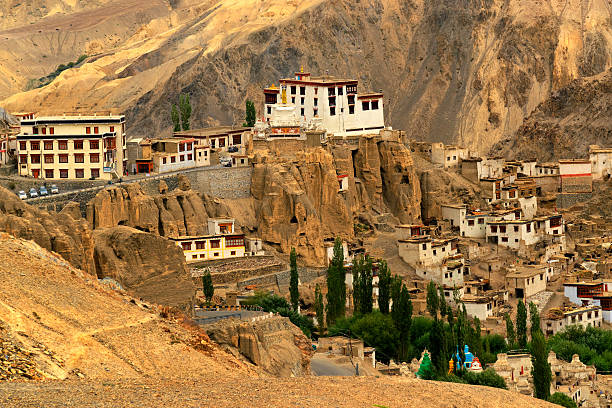
How to reach the Moonland of Lamayuru Ladakh
The nearest airport to Lamayuru is Kushok Bakula Rimpochee Airport in Leh, Ladakh. You can take a flight to Leh from major cities like Delhi, Srinagar, and Chandigarh. From Leh, you’ll need to travel by road to reach Lamayuru.
By Road
Lamayuru is approximately 125 kilometers west of Leh. The journey takes around 4-5 hours by road. Public buses and shared taxis operate between Leh and Lamayuru. You can also hire a private taxi for a more comfortable and flexible journey.
Route- The route from Leh to Lamayuru passes through stunning landscapes, high mountain passes, and picturesque valleys. You’ll travel along the Leh-Srinagar Highway for most of the journey.

